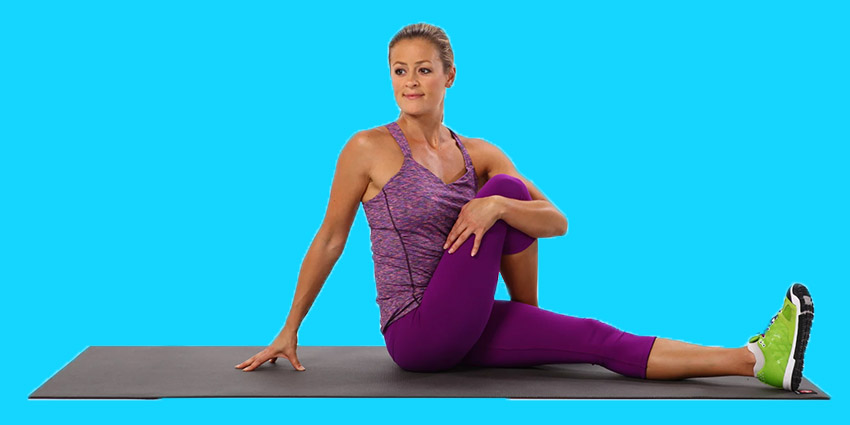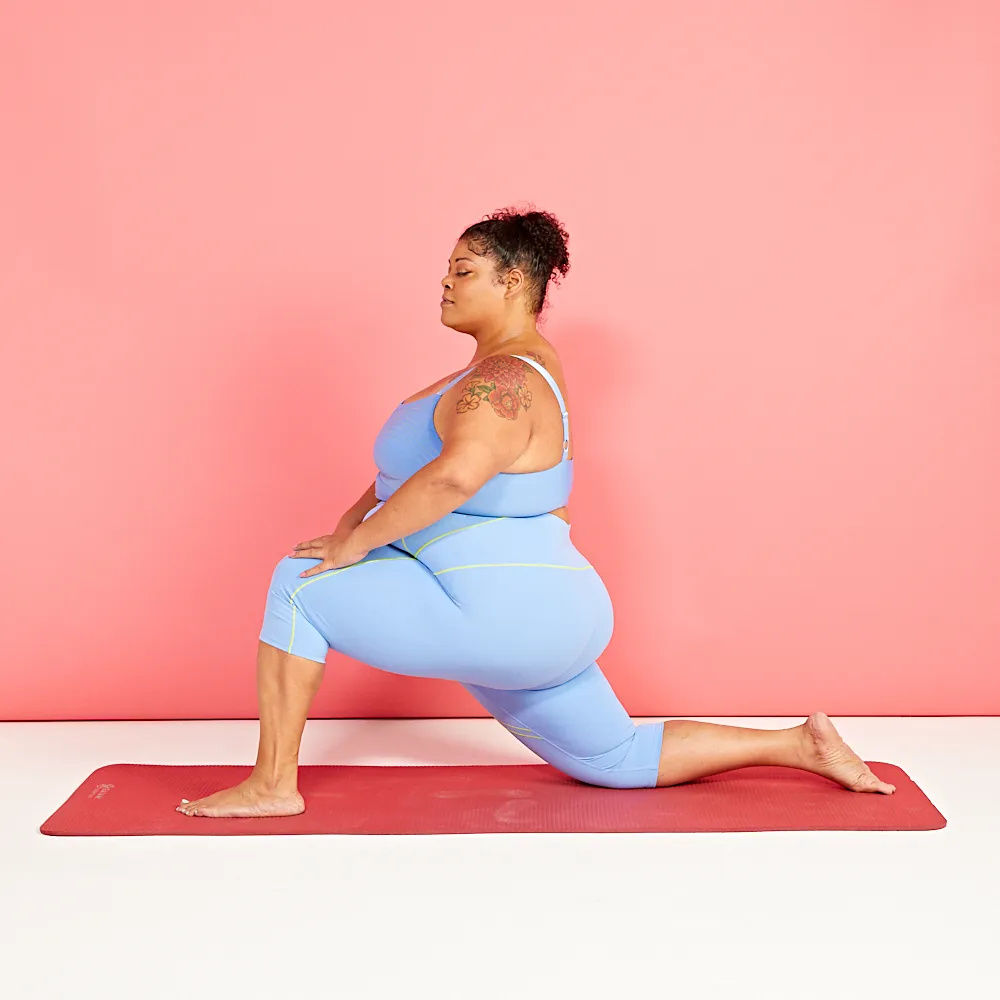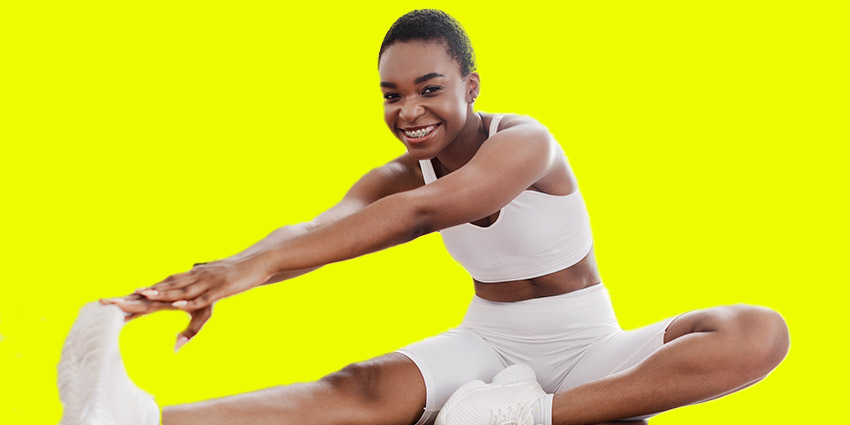9 Helpful Desk Stretches to Protect Your Physical Health
Stretch and Bend Your Way to Better Health

Workplace injuries and physical disorders aren’t just reserved for people in high-octane jobs. Increasingly, the more time we all spend in front of a desk, the more we’re discovering how bad long periods of inactivity can be for our health. Research even shows poor posture, repetitive motion, and failing to switch positions regularly enough can cause musculoskeletal disorders.
If you don’t have the most ergonomic set up (like most people), you could find yourself ending each day with an achy neck, a painful back, and a host of other problems. The good news? You can stretch away some of that pesky discomfort.
Setting aside a little time each day for stretching and movement will keep your muscles, joints, and spine as healthy as possible – and you don’t even need to stand up to get started.
Here are some great desk stretches to help you thrive.
1. The Chest Stretch
Do you spend a lot of time hunched over your keyboard? Stretching your chest could be an ideal way to open up your airways, and minimise discomfort.
Sitting in your desk chair, pull your arms behind you and connect your fingers together. Straighten your arms as far as you can, and light them gently until you feel a pulling sensation in your chest.
Hold this position for 10 to 30 seconds, and move around a little if you can. You can also use a resistance band or just hold onto your bottle of water to give you something to grip as you stretch.

2. Seated Spinal Rotation
Problems with the spine and back pain are common among people who spend a lot of time in front of a computer. If you tend to end each day with a pain in your back, try a seated spinal rotation.
While sitting in your desk chair, cross your arms over your chest, so your fingers are grabbing your shoulders. When you’re ready, gently rotate your body from left to right at the waist, moving as far as it feels comfortable to do so. You should feel a little tension in your lower back as you work the muscles.

3. Shoulder shrugs
Your head, neck, and shoulders can hold a lot of tension as you work on your keyboard, typing and clicking. This is particularly problematic if you hunch a lot, placing pressure on the shoulder muscles. Getting the blood moving with shoulder shrugs can be a great solution.
While still sitting in your chair, lift your shoulders gently up towards your ears, squeezing the muscles as tight as you can. Try to pull your shoulders towards your ears, and hold the position for a few seconds, before letting them slowly fall back into their original position. You can gently roll your shoulders back to enhance the stretch as they fall back into place.

4. Back Extensions
While your shoulder shrugs will help to get the circulation in your upper back and neck, back extensions are excellent for extending all the muscles between your shoulder blades. To begin, stretch your arms out in front of you as far as you can, and rotate your palms to face upwards. You can also place your hands on the back of your head.
Cross your arms, so you’re holding your palms together, and contract your abs. Gently allow your back to curve slightly, as though you’re bending backwards over a ball. Hold the stretch for a couple of seconds, then gradually relax.

5. Neck Rotations
It’s easy for your neck to become stiff and achy when you hold it in one position for a long period of time. Moving your head from side to side can be one of the easiest ways to counteract this problem. It also gives your eyes a much-needed break from your computer screen.
Sit up as straight as you can, and gently move your head from side to side. Try to push your neck as far as it will go over your shoulder, without causing discomfort. You should feel the muscles on your neck stretching.

6. Trunk Rotation
If you get a lot of tension in your core and stomach when you’re working for long periods of time, you might need to exercise your trunk a little more. Keeping your feet firmly on the ground, twist slightly and place one hand on the back of your chair. Rotate your body from the waist towards the arm on the chair, moving your head at the same time.
Hold the pose for a few seconds, before switching and moving in the other direction. This should create a slight pressure in your core.

7. Forearm Stretch
Do you spend a lot of time typing in your day job? You might not realise how tight your wrists and forearms can get after tapping at your keyboard for hours a day. This simple stretch will help to protect the muscles in your arms.
While seated, stretch your right arm outwards and turn it so your fingers are pointing towards the floor. Use your left hand to grip your fingers and gently pull them back towards you. Keep your right arm as straight as you can. Hold for 10 seconds before switching to the other arm.

8. Hip and Knee Stretch
The lower body can also suffer from spending too much time sitting down. Usually, when you’re sitting in a standard desk chair, your glutes are stretching, and your hip flexors are contract, which can create tension and tightness. Making time to stretch this area a few times a day can reduce this discomfort.
Sitting back in your chair, grab one knee at a time and pull it towards your chest. Hold the position for 10 to 30 seconds before switching to the other leg.

9. Hamstring Stretch
To stretch out more of your legs in one go, and reduce some of the tension in your back, try a simple hamstring stretch. Remaining in your seat, swivel away from your desk and stretch one of your leg outwards, with the heel on the floor. Reach towards your toes with your fingers and hold for 10 to 30 seconds.
Switch to the other leg and stretch again. You can alternate a few times between each leg to get the most of this exercise.

Get Stretching!
Ideally, it’s best to stretch regularly throughout the day to keep your discomfort to a minimum. Set an alarm to go off every hour or so, and focus on stretching the parts of your body that feel the most tension. Remember, avoid any exercises that cause discomfort, and don’t push yourself to do more reps than you need to – it’s not a workout!




